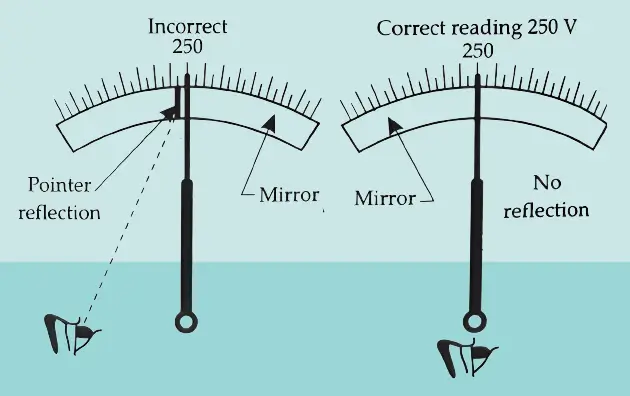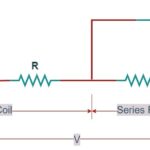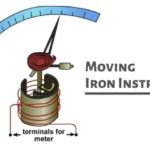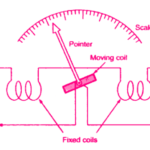No measurement can be made with perfect accuracy but it is important to find out what accuracy actually is and how different errors have entered into the measurement. In this article we will discuss different types of errors in measuring instruments and suitable measures to minimize the errors.
A study of errors is a first step in finding ways to reduce them. Errors may arise from different sources and are usually classified as under :
- Gross Errors
- Systematic Errors
- Instrumental Error
- Environmental Error.
- Observational Error
- Random Errors
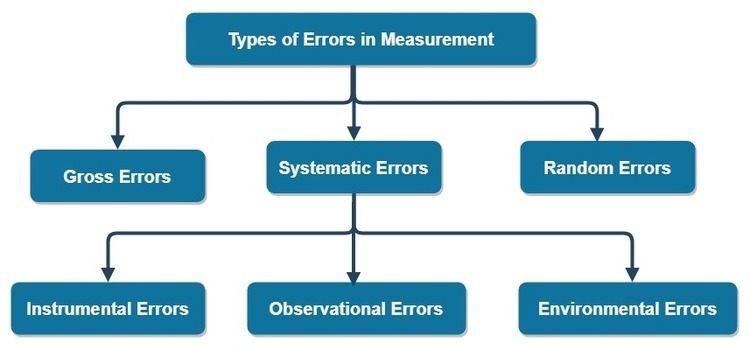
Gross Errors
This class of errors mainly covers human mistakes in reading instruments and recording and calculating measurement results. The responsibility of the mistake normally lies with the experimenter.
The experimenter may grossly misread the scale. For example, he may, due to an oversight, read the temperature as 31.5°C while the actual reading may be 21.5°C. He may transpose the reading while recording. For example, he may read 25.8°C and record 28.5°C instead.
But as long as human beings are involved, some gross errors will definitely be committed. Although complete elimination of gross errors is probably impossible, one should try to anticipate and correct them.
Some gross errors are easily detected while others may be very difficult to detect. Gross errors may be of any amount and therefore their mathematical analysis is impossible.
However, they can be avoided by adopting two means:
- Great care should be taken in reading and recording the data.
- Two, three or even more readings should be taken for the quantity under measurement. These readings should be taken preferably by different experimenters and the readings should be taken at a different reading point to avoid re-reading with the same error.
It should be understood that no reliance be placed on a single reading. It is always advisable to take a large number of readings as a close agreement between readings assures that no gross error has been committed.
Systematic Errors
These types of errors are divided into three categories: Instrumental Errors, Environmental Errors, Observational Errors.
1. Instrumental Errors
The instrument error generate due to instrument itself. These errors arise due to three main reasons:
- Due to inherent shortcomings in the instrument,
- Due to misuse of the instruments, and
- Due to loading effects of instruments.
Inherent shortcomings of instruments:
These errors are inherent in instruments because of their mechanical structure. They may be due to construction, calibration, or operation of the instruments.
These errors may cause the instrument to read too low or too high. For example, if the spring (used for producing controlling torque) of a permanent magnet instrument has become weak, the instrument will always read high. Errors may be caused because of friction, hysteresis, or even gear backlash.
While making precision measurements, we must recognize the possibility of such errors as it is often possible to eliminate them, or at least reduce them to a great extent by using the following methods:
- The procedure of measurement must be carefully planned. Substitution methods or calibration against standards may be used for the purpose.
- Correction factors should be applied after determining the instrumental errors.
- The instrument may be re-calibrated carefully.
Misuse of instruments:
- There is an old saying that instruments are better than the people who use them.
- Errors in measurements often stem from the operator’s mistakes rather than faults in the instrument itself.
- A good instrument used improperly may yield incorrect results.
- Examples of misuse of instrument include:
- Failure to adjust the zero of instruments.
- Poor initial adjustments.
- Using leads of too high resistance etc.
- While these improper practices may not permanently damage the instrument, they still cause errors.
- Certain ill practices, such as using the instrument contrary to manufacturer’s instructions, can lead to permanent damage, including overloading and overheating, resulting in failure of the instrument or even the entire system.
Loading effects:
Loading effect is a common error, especially among beginners. It occurs due to improper use of an instrument for measurement work.
For instance, a well calibrated voltmeter may provide misleading voltage readings when connected across a high resistance circuit (See Example 1). Conversely, the same voltmeter may offer a more dependable reading when connected in a low resistance circuit (See Example 2). Let us explain this in the following examples.
Example 1
A voltmeter having a sensitivity of 1000 Ω/V reads 100 V on its 150 V scale when connected across an unknown resistor in series with a multi-ammeter. When the milli-ammeter reads 5 mA, calculate:
(a) apparent resistance of the unknown resistor,
(b) actual resistance of the unknown resistor, and
(c) error due to the loading effect of voltmeter.
Solution:
Total circuit resistance $$R_T=\frac{E_T}{l_T}=\frac{100}{5 \times 10^{-3}}=20k \Omega$$
(a) Neglecting the resistance of milli-ammeter, the value of unknown resistor Rx = 20 kΩ.
(b) Resistance of voltmeter
Rv = 1000 x 150 Ω = 150kΩ.
As the voltmeter is in parallel with the unknown resistance, we have
$$ R_T=\frac{R_x R_V}{R_V+R_x} $$
or unknown resistance
$$ R_x=\frac{R_T R_V}{R_V-R_T}=\frac{20 \times 150}{150-20}=23.077 \mathrm{k} \Omega $$
(c) Percentage error
$$
\begin{aligned}
& =\frac{\text { measured value }- \text { true value }}{\text { true value }} \times 100 \\
& =\frac{20-23.077}{23.077} \times 100=-13.33 \% .
\end{aligned}
$$
Example 2
Repeat example 1 if the milli-ammeter reads 800 mA and the voltmeter reads 40 V on its 150 V scale
Solution:
(a) $$R_T=\frac{E_T}{l_T}=\frac{40}{800 \times 10^{-3}}=50 \Omega$$
(b)
$$
\begin{aligned}
\quad R_V & =1000 \times 150 \Omega=150 \Omega \
\\therefore \quad R_x & =\frac{R_T R_V}{R_V-R_T} \\
& =\frac{50 \times 150 \times 10^3}{150 \times 10^3-50}=50.017 \Omega .
\end{aligned}
$$
(c) Percentage error
$$
=\frac{50.0-50.017}{50.017} \times 100=-0.034 \%
$$
These two examples highlight how the voltmeter’s loading effect alters the actual circuit conditions during the measurement process.
How to Avoid Loading Effect
Errors caused by meter loading effects can be avoided by using them intelligently.
- When measuring low resistance with the ammeter-voltmeter method, a voltmeter with a high resistance value should be used.
- When planning measurements, consider the loading effect of instruments.
- Make corrections for these effects if necessary, or opt for more suitable instruments.
- Prefer methods with negligible or no loading effects.
2. Environmental Errors
These errors stem from conditions external to the measuring device, including the surrounding area’s temperature, pressure, humidity, dust, vibrations, and external magnetic or electrostatic fields.
Corrective measures to reduce these effects include:
- Keeping conditions as constant as possible, such as maintaining a constant temperature by using temperature-controlled enclosures.
- Using equipment that is immune to these effects, like resistance materials with a low resistance temperature co-efficient to minimize variations in resistance with temperature.
- Employing techniques to eliminate the effects of disturbances, such as hermetically sealing equipment to eliminate humidity and dust.
- Providing magnetic or electrostatic shields if external fields may affect instrument readings.
- Applying computed corrections when necessary, although efforts are made to avoid them, for accurate computation of results.
3. Observational Errors
Many sources contribute to observational errors. For instance, the pointer of a voltmeter may rest slightly above the scale’s surface, leading to a parallax error unless the observer’s line of vision is directly above the pointer.
To minimize parallax errors, highly accurate meters feature mirrored scales. Mirrored scales allow the observer’s eye to be in line with the pointer when its image appears hidden. Despite mirrored scales minimizing parallax error, a small error may still exist.
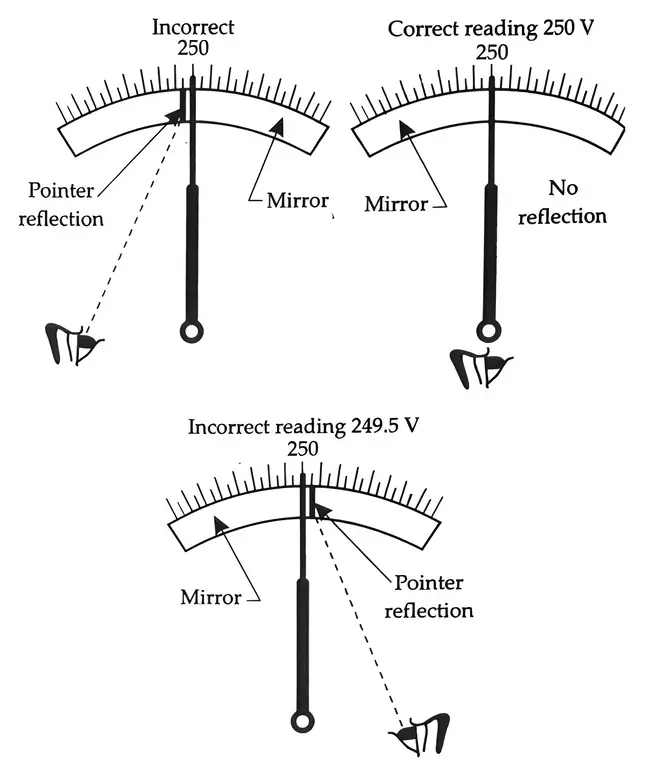
Parallax errors occur when the pointer and the scale are not in the same plane. This error can be eliminated by ensuring both the pointer and the scale are in the same plane.
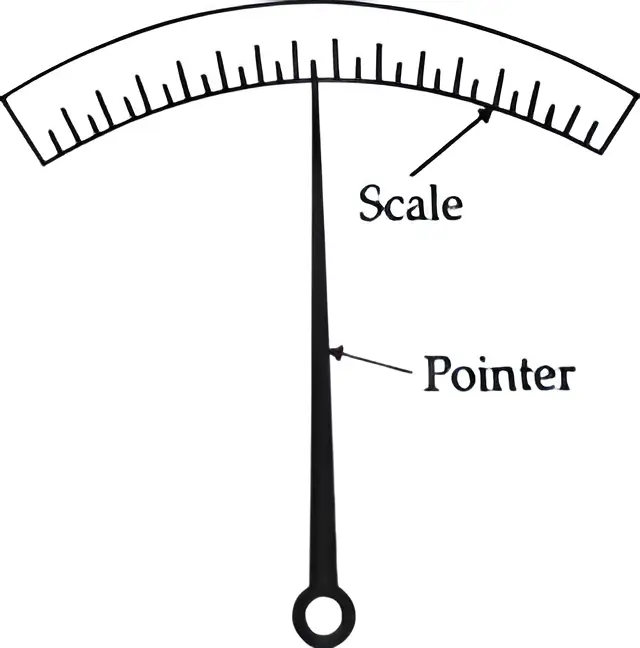
Human factors also contribute to measurement errors. Individual observer’s sensing capabilities impact measurement accuracy.
Observational errors are evident in measurements involving timing events, where one observer may anticipate signals and read too soon.
Different experimenters may produce varying results, particularly in sound and light measurements, due to differences in physical responses.
Modern electrical instruments with digital displays eliminate errors associated with human observational or sensing capabilities, as the output is presented in digit form.
Random (Residual) Errors:
Experimental results often exhibit variation from one reading to another, even after accounting for all systematic errors.
- These errors arise from numerous small factors that fluctuate between measurements and are attributable to chance.
- The quantity being measured is influenced by various events throughout the universe.
- While we are aware of and account for some influencing factors, others remain unknown.
- Unaccounted happenings or disturbances are collectively termed “Random” or “Residual.”
- Errors resulting from these unknown happenings are termed Random (or Residual) Errors.
- These errors persist even after systematic errors have been addressed, hence referred to as Residual (Random) Errors.
Summary
Here’s a summary of different types of errors and measures to minimize errors.
| Error Type | Description | Measures to Minimize Errors |
|---|---|---|
| Gross Errors | Human mistakes in reading, recording, and calculating measurement results. | – Take great care in reading and recording data. – Take multiple readings, preferably by different experimenters. – Avoid relying on a single reading. – Ensure readings are taken at different points to avoid re-reading with the same error. |
| Systematic Errors | Errors divided into three categories: Instrumental Errors, Environmental Errors, Observational Errors. | – Plan measurement carefully. – Apply correction factors after determining instrumental errors. – Re-calibrate instruments if necessary. – Properly adjust instrument zero. – Use instruments according to manufacturer’s instructions. |
| Environmental Errors | Errors stemming from external conditions such as temperature, pressure, humidity, etc. | – Maintain constant conditions whenever possible. – Use equipment immune to environmental effects. – Employ techniques to eliminate disturbances. – Provide shields against external fields. – Apply computed corrections when necessary. |
| Observational Errors | Errors due to human factors affecting measurement accuracy. | – Minimize parallax errors with accurate meters and proper alignment. – Ensure scale and pointer are in the same plane. – Utilize modern digital instruments to eliminate human errors. – Account for individual sensing capabilities. |
| Random (Residual) Errors | Errors resulting from small, fluctuating factors attributable to chance. | – Be aware of and account for influencing factors. – Use mirrored scales and alignment to minimize parallax. – Utilize digital instruments for more accurate readings. – Continue studying and accounting for unknown factors. |
Measurement Errors Quiz
- What type of errors mainly cover human mistakes in reading instruments and recording measurement results?
a) Systematic Errors
b) Instrumental Errors
c) Gross Errors
d) Environmental Errors - How can gross errors be minimized?
a) By taking multiple readings and avoiding reliance on a single reading
b) By using instruments immune to environmental effects
c) By planning measurements carefully and applying correction factors
d) By providing shields against external fields - What category of errors arise due to conditions external to the measuring device?
a) Observational Errors
b) Random Errors
c) Environmental Errors
d) Instrumental Errors - What is the main cause of instrumental errors?
a) Misuse of the instruments
b) Loading effects of instruments
c) Inherent shortcomings in the instrument
d) Environmental conditions - What is a common error in measurements involving timing events?
a) Parallax Error
b) Gross Error
c) Systematic Error
d) Observational Error - Which type of errors are attributable to numerous small factors that fluctuate between measurements?
a) Gross Errors
b) Systematic Errors
c) Random (Residual) Errors
d) Instrumental Errors - How can observational errors be minimized?
a) By maintaining constant environmental conditions
b) By using instruments immune to environmental effects
c) By aligning the scale and pointer in the same plane
d) By providing shields against external fields - What corrective measures can be employed to reduce environmental errors?
a) Taking multiple readings and avoiding reliance on a single reading
b) Using equipment that is immune to environmental effects
c) Applying correction factors after determining instrumental errors
d) Planning measurements carefully
Answers:
- c) Gross Errors
- a) By taking multiple readings and avoiding reliance on a single reading
- c) Environmental Errors
- c) Inherent shortcomings in the instrument
- d) Observational Error
- c) Random (Residual) Errors
- c) By aligning the scale and pointer in the same plane
- b) Using equipment that is immune to environmental effects
